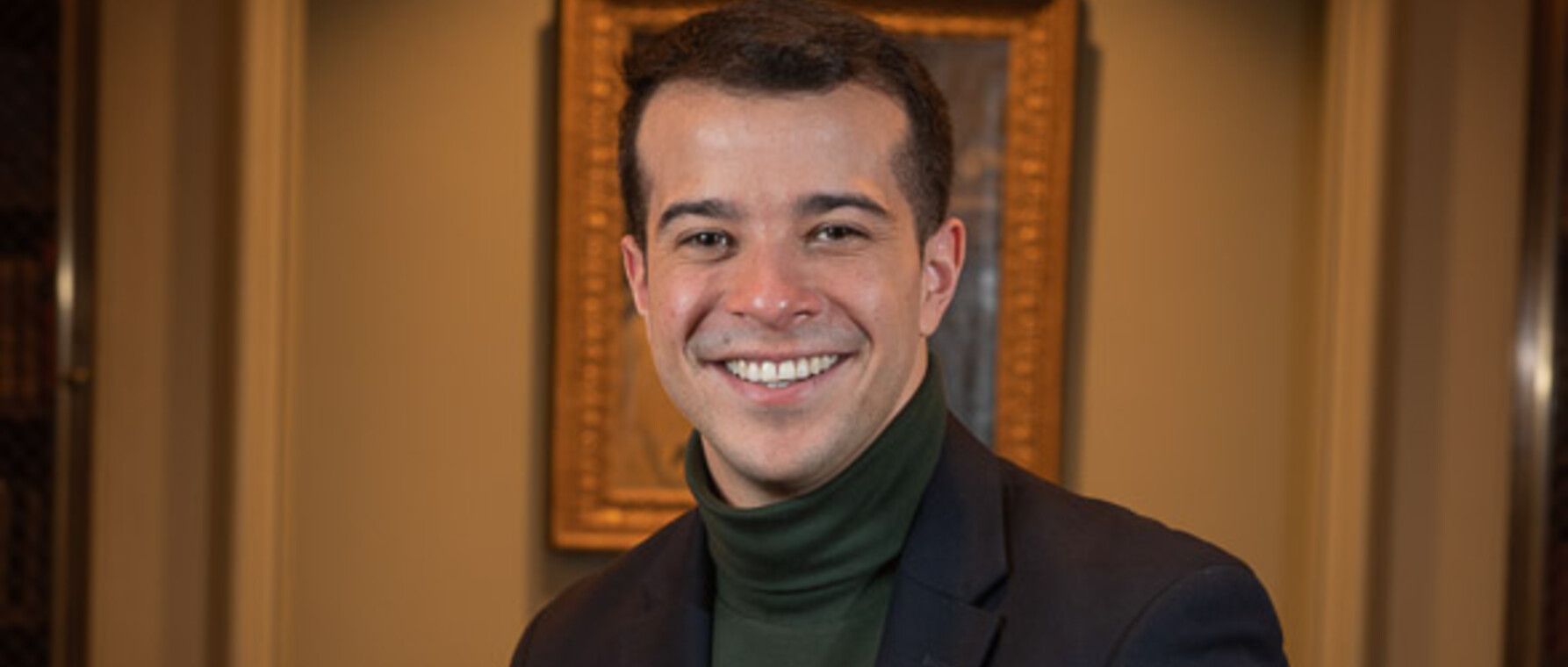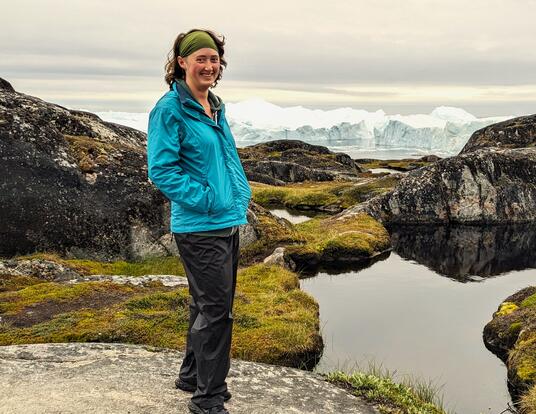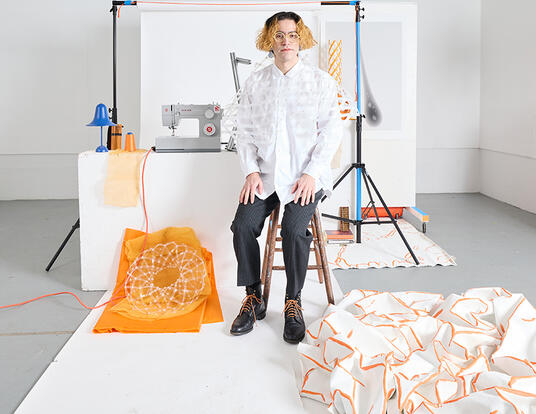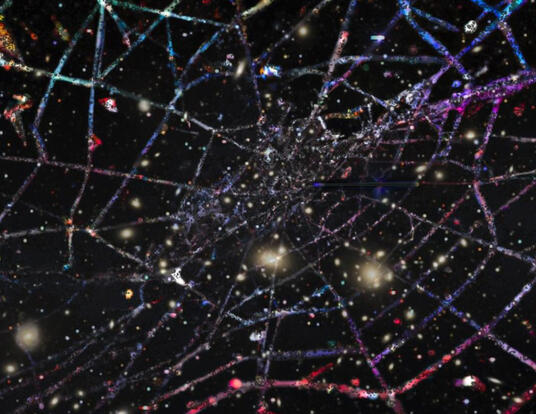All Politics is Local
Mateo Jarquín adds a new perspective to scholarship on the Sandinista Revolution

Mateo Jarquín is a PhD candidate in history and 2019 Harvard Horizons Scholar. Born in the United States and raised in the US and Nicaragua, Jarquín became fascinated with the revolution that tied both countries together.
What drew you to study revolutionary movements, particularly the Sandinista Revolution?
Nicaragua, like many so-called Cold War “hotspots” in the Global South, was ravaged by armed conflict in the 1970s and 1980s. At the center of the violence was the 1979 Sandinista Revolution, which overthrew the US-backed Somoza dictatorship. At the time, the Sandinistas electrified the global left as much as they alarmed the administration of President Ronald Reagan, which set about destabilizing this new revolutionary government in Central America. US support for proxy insurgents known as the Contra, combined with local discontent over certain elements of the Sandinista revolutionary agenda, fueled a hugely destructive civil war in a country which was—and continues to be—among the poorest and most unequal in the hemisphere.
In a microcosm of what happened on the national level, my family was torn in two by the era’s ideological polarization. My parents were officials in the Sandinistas’ revolutionary government; they sincerely believed in its promise of adapting socialist ideals to bring about social justice, economic equality, and true national sovereignty. But many of my aunts and uncles saw the Revolution as a totalitarian menace and instead helped lead the US-backed opposition. They were literally brothers on opposite sides of a civil war that was in many ways a refraction of a broader, global struggle between communist and capitalist worldviews. Thankfully (in case you were wondering) everybody in my family gets along just fine these days.
How did this family history affect you?
I grew up asking questions: Why was there a revolution in my family’s country, and not elsewhere? What even is a revolution, anyway? Are they engines of social change, or mere vehicles for the politically ambitious and power-hungry? And what was it about this bygone era, the Cold War, that possessed people like my parents to place so much weight in their political convictions, putting ideological dreams before other priorities, such as familial ties? On top of that, having grown up in between the US and Nicaragua, I was exposed to the terrible contrast between wealthy and developing countries. Perhaps the main tragedy of Central America in the 1980s was that, after all the carnage, the region’s countries remained poor, unequal, and prone to corruption and authoritarianism.
My underlying intellectual commitment is to help my own community reckon with the ways that their recent history has shaped their present, and the ways in which the past might inform a brighter future.
In your research, you are focusing on telling the story of revolution without focusing exclusively on US foreign policy. Is this a perspective that is missing from the scholarship?
What happens all too often in US-based scholarship is that the histories of “exotic” places in Africa, Asia, and Latin America become abstract tools that Americans use to confirm their ideological priors or as weapons to wield in domestic political debates. This is precisely what happened with the Nicaraguan Revolution. Many Americans, with good reason, were critical of US intervention in Central America. Their opposition to the Reagan Administration’s policies, in turn, led them to cast the Sandinistas in a very positive light. By contrast, those US citizens who supported Reagan’s efforts to “roll back” communism saw the Sandinistas as totalitarian thugs.
Most scholarship is a continuation of that debate—they use declassified US government sources in debates on the motivations and consequences, even the morality, of Washington’s policy in Central America. And that’s an indispensable line of inquiry. But while it helps Americans understand the role that their country plays in the world, it actually doesn’t go very far in answering the questions I mentioned above. A narrow focus on US intervention—whether it’s critical or sympathetic—denies legitimate Central American agency. More importantly, US documents simply can’t tell us why there was a revolution in Nicaragua or what its leaders hoped to accomplish.
Nor can it tell us how this Revolution reverberated beyond Nicaragua’s borders. In Latin America, the Sandinista Revolution was a very big deal, something that an obsession with Oliver North and Elliott Abrams actually obscures. This was the first time that the armed Left had seized power in the region since the Cuban Revolution. For many Latin Americans, the Sandinistas—who infused socialist principles with liberal-democratic sensibilities—represented an opportunity to correct the excesses of the Cuban Revolution as well as the shortcomings of the Mexican Revolution. So, while the Sandinista period has been used as a case-study in analyses and critiques of US foreign policy, I actually use Nicaraguan sources—documents from the revolutionary government as well as oral history interviews with Sandinista leaders—to write the first international history of the Revolution from the perspective of Managua, Nicaragua’s capital. Because the Revolution was so intertwined with wider Latin American trends and politics, I also conducted archival research and oral history interviews in Mexico, Cuba, Costa Rica, and Panama.
How has Latin American politics changed over time, and how does a revolutionary past play into those changes?
This question is a great starting point for building on that last point. Revolutions have always been central to broad changes in the region’s politics. When the Sandinistas started getting close to overthrowing the Somoza dictatorship in the late 1970s, there were only two or three “full democracies” in Latin America. But by the time the Sandinistas’ own revolution ended in democratic elections in 1990, Nicaragua became one of 14 or 15 countries to transition to democracy in the intervening period. What I argue in my research is that regional support for Somoza’s overthrow was part of this democratic wave, and that, in turn, the conflicts generated by the Sandinista Revolution helped drive the creation of liberal-democratic regimes in Central America.
My generation was taught that liberal democracy and borderless values of human rights were the only game in town. Democracy and liberalism, the argument went, were the ultimate form of human government; it was only a matter of time before authoritarian capitalist governments (think China) would liberalize their political systems. Obviously, that didn’t happen, and now the world is obsessed with this question of “democratic backsliding” around the globe. My research explores the contradictory and misunderstood ways in which democracy spread in the late 20th century in the first place—in broad swaths of the Global South, electoral systems were actually adopted in response to the ideologically-fueled wars and foreign interventions of the Cold War–era. That context is crucial for contemporary debates about why we’re seeing democracy seemingly in crisis on a global scale.
What can we learn by studying the past?
There are so many reasons to study the past. Most people, without thinking, put some version of historical thinking into practice every single day: They look at past experiences in order to inform decisions in the present.
But my favorite reason comes from the British medieval historian John Arnold. He points out that history is an argument—specifically, about how things have changed over time—and that arguments represent the opportunity for change. Sometimes you look at the world around you and think that things must have always been this way, for better or worse. But “history allows us to demur,” Arnold once wrote, because it enables us to “point out that there have always been many courses of action, many ways of being. History provides us with the tools to dissent.”
What are your plans for the future?
In the short- and medium- term, I’m excited about turning my dissertation research project, A Latin American Revolution, into a book manuscript. Future research will explore similar themes—the confluence of revolutionary actors and transformation of mainstream politics in Latin America—but on a much broader geographic scale. And I will always use this research to help shed light on Central America’s contemporary challenges, from the so-called migration crisis to the rise in new forms of authoritarianism and human rights abuse in the region.
Watch Jarquín discuss his research at the Harvard Horizons symposium, April 10, 2019, at 4:30 p.m. in Sanders Theatre.
Photos by Stu Rosen
Get the Latest Updates
Join Our Newsletter
Subscribe to Colloquy Podcast
Simplecast Stitcher





